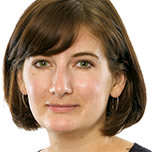How to cut the cost of childcare
Childcare is expensive, yet few people are drawing upon all the government support they are entitled to. Ruth Jackson-Kirby explains what help is available and how to get it.


This week the government announced a long overdue consultation on how it can reduce childcare bills. More than a third of a couple’s salary is typically spent on childcare, according to data from the OECD, an association of developed countries. That makes Britain the second-most expensive country for childcare in the world after New Zealand.
Millions of families are struggling to balance working and childcare. Energy bills, food and the soaring price of petrol are adding mounting pressure to household budgets. With inflation at a 40-year high it makes sense to take advantage of government support that can help keep costs down.
The tax-free childcare scheme allows parents to draw upon up to £2,000 a year from the state to help pay for childcare ranging from nurseries to childminders. However, data from HMRC shows that few are claiming the tax relief: only 384,000 of the 1.3 million parents eligible for the scheme have signed up.
MoneyWeek
Subscribe to MoneyWeek today and get your first six magazine issues absolutely FREE

Sign up to Money Morning
Don't miss the latest investment and personal finances news, market analysis, plus money-saving tips with our free twice-daily newsletter
Don't miss the latest investment and personal finances news, market analysis, plus money-saving tips with our free twice-daily newsletter
How the relief works
The scheme effectively cuts 20% off the cost of childcare. Parents need to open a childcare account with HMRC and save money into it. For every 80p you put into your account, the state will add 20p, so if you pay in £800 the government will give you £200, up to an annual limit of £2,000.
You can then use that money to pay for a range of childcare from nurseries to childminders to au pairs; it also covers holidays, breakfast and after-school clubs. As long as the childminder of your choice is registered with Ofsted, which regulates schools and childcare facilities, you should be able to pay them directly from your tax-free childcare account.
Working parents can open a tax-free childcare account provided they have a child aged under 11 (or under 17 if the child is disabled) and are earning more than £152 but less than £100,000 a year. There is a quarterly cap of £500 on the money you can receive from the government with the scheme.
If you can, make sure you pay into your childcare account all year-round, even if you don’t need to pay a childcare bill that month. That way you can make the most of the government top-up every month and avoid missing out. Once your child has turned three, they may be eligible for 30 hours of free childcare every week during term time, but you can continue using your tax-free childcare account to pay for any additional care you need, and you will still receive the government bonus.
The previous voucher scheme can help
Tax-free childcare was introduced to replace the old childcare voucher system, but some may still be able to get vouchers. The childcare voucher scheme closed to new applicants in October 2018, but you can still use them if you signed up before then. They allow you to pay for childcare from your pre-tax salary.
They are suitable for higher earners as there is no cut-off, meaning you can still use them if you earn over £100,000 a year; in that case, however, you wouldn’t be able to use the tax-free childcare scheme.
Another way the government can help you with your childcare is through child benefit. Research by EntitledTo, an online benefits calculator, has found that around 575,000 families are not claiming child benefit despite being eligible for up to £1,133 a year.
Many parents are put off claiming child benefit; if you are a higher-rate taxpayer you have to repay some of what you receive. But as the cost-of-living crisis bites it may be worth a little extra paperwork (you have to repay via your tax return) in order to claim.
Child benefit is paid at a rate of £21.80 a week for your first child and £14.45 a week for every other child until they turn 17. You have to pay back 1% of your child benefit for every £100 you earn over £50,000, so if you earn £60,000 or more you pay back the full amount. Child-benefit payments can be backdated by up to three months. You can apply for child benefit at www.gov.uk/child-benefit.
SEE ALSO:
The best interest-free credit card deals
Get the latest financial news, insights and expert analysis from our award-winning MoneyWeek team, to help you understand what really matters when it comes to your finances.
Ruth Jackson-Kirby is a freelance personal finance journalist with 17 years’ experience, writing about everything from savings accounts and credit cards to pensions, property and pet insurance.
Ruth started her career at MoneyWeek after graduating with an MA from the University of St Andrews, and she continues to contribute regular articles to our personal finance section. After leaving MoneyWeek she went on to become deputy editor of Moneywise before becoming a freelance journalist.
Ruth writes regularly for national publications including The Sunday Times, The Times, The Mail on Sunday and Good Housekeeping, among many other titles both online and offline.
-
 RICS: Seller confidence hits new high but buyers are yet to return to the property market
RICS: Seller confidence hits new high but buyers are yet to return to the property marketThe latest Residential Market Survey from the Royal Institution of Chartered Surveyors (RICS) shows there are signs that confidence is slowly returning to the housing market
-
 'Lockdown wills’ at increased risk of legal challenge
'Lockdown wills’ at increased risk of legal challengePressures caused by the pandemic led some people to rush their wills. Now, lawyers are saying problems are surfacing that could make them invalid
-
 Act now to bag NatWest-owned Ulster Bank's 5.2% easy access savings account
Act now to bag NatWest-owned Ulster Bank's 5.2% easy access savings accountUlster Bank is offering savers the chance to earn 5.2% on their cash savings, but you need to act fast as easy access rates are falling. We have all the details
-
 Moneybox raises market-leading cash ISA to 5%
Moneybox raises market-leading cash ISA to 5%Savings and investing app MoneyBox has boosted the rate on its cash ISA again, hiking it from 4.75% to 5% making it one of top rates. We have all the details.
-
 October NS&I Premium Bonds winners - check now to see what you won
October NS&I Premium Bonds winners - check now to see what you wonNS&I Premium Bonds holders can check now to see if they have won a prize this month. We explain how to check your premium bonds
-
 The best packaged bank accounts
The best packaged bank accountsAdvice Packaged bank accounts can offer great value with useful additional perks – but get it wrong and you could be out of pocket
-
 Bank of Baroda closes doors to UK retail banking
Bank of Baroda closes doors to UK retail bankingAfter almost 70 years of operating in the UK, one of India’s largest bank is shutting up shop in the UK retail banking market. We explain everything you need to know if you have savings or a current account with Bank of Baroda
-
 How to earn cashback on spending
How to earn cashback on spendingFrom credit cards and current accounts to cashback websites, there are plenty of ways to earn cashback on the money you spend
-
 John Lewis mulls buy now, pay later scheme
John Lewis mulls buy now, pay later schemeThe CEO of John Lewis has said the retailer will consider introducing buy now, pay later initiatives for lower-priced items.
-
 State pension triple lock at risk as cost balloons
State pension triple lock at risk as cost balloonsThe cost of the state pension triple lock could be far higher than expected due to record wage growth. Will the government keep the policy in place in 2024?
